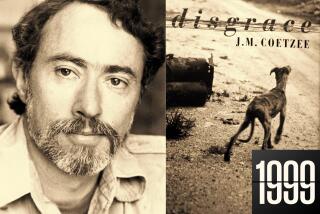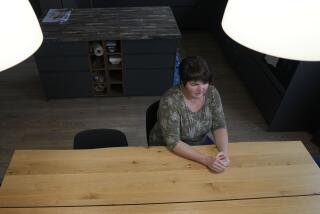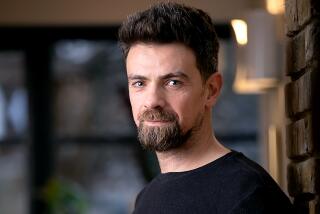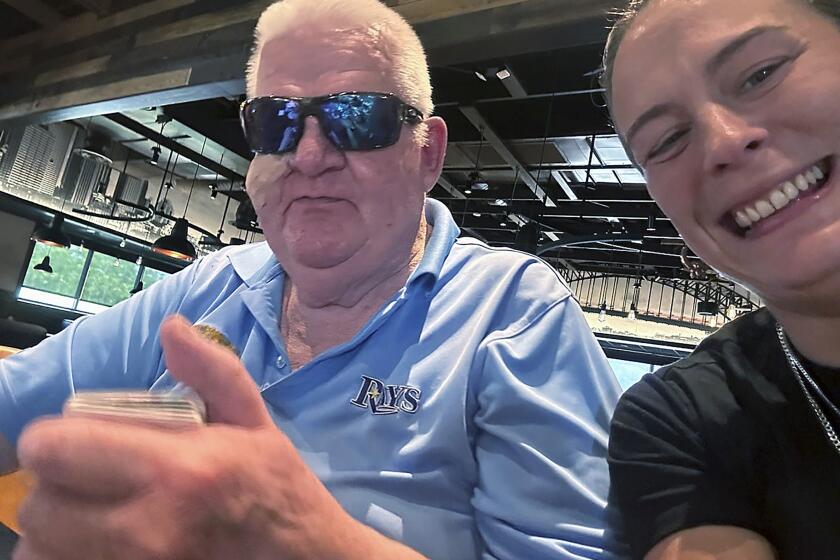Kosovo’s Winter of Discontent Threatening to Explode Into Civil War : Yugoslavia: The province’s Albanian majority is under siege from an increasingly nationalistic Serbia.
PRISTINA, Yugoslavia — The warm hotel restaurant is a welcome relief from sleet and tension jostling on the streets of a wounded city.
A violinist plays his way down the long room where every place setting, about 200 in all, is dressed with a starched and fluffed napkin, jaunty sailboats awaiting a breeze.
Completing a tango, the violinist strolls to the next table. It is empty, like all the rest. No one has come for a weekend dinner at the biggest restaurant in a city of 200,000. Staring without expression at four yawning red chairs, the violinist plays “Over the Rainbow.”
There are troubles without end in Yugoslavia’s Kosovo province this winter. None, tragically, melt like lemon drops. They fester instead amid anger, recrimination and long-shot tries to avert civil war in a region that could become unhappily famous as the 1990s kin of Ulster and the West Bank.
Big, tough, blue-helmeted cops in apron-length flak jackets patrol through the cold and mud in Pristina, a long 200 miles south of Belgrade.
Ready crews wait by army tanks parked in a depot outside of town. Around a bend on a country road, travelers are startled by a protest procession of kerchiefed peasant women flashing “V” signs.
Such are legacies of a week of rage last month that claimed 32 lives among ethnic Albanians, who make up 90% of Kosovo’s 1.9 million people. They were killed by riot police imposing control of the province by an assertive and unabashedly nationalistic Serbia, the largest of Yugoslavia’s six republics.
The Yugoslav armed forces, alarmed at the Kosovo unrest as evidence of growing momentum toward national disintegration, also staged a massive show of force in the province. In the aftermath, historic antagonisms between the Albanian majority and the Serbian minority in Kosovo are ugly and raw. Two communities stand daggers drawn, divided by language, by religion and by conflicting visions of Kosovo’s future.
“You won’t see any of them in here,” boasted the Serbian owner of a restaurant in the Pristina neighborhood where Serbo-Croatian is the language and Serbian Orthodox is the religion.
A few blocks away, ethnic Albanians born to their father’s tongue--and most of them to Islam--gather in the smoky Elida cafe, where a portrait of Mickey Mouse savoring a triple-scoop ice cream cone belies the trying times.
The Albanians are bloodied but in full cry, taking advantage of a national political opening that has left Kosovo more accessible than ever before to outsiders with notebooks and cameras.
Many of the recent dead, the dissidents say with impressive documentation, did not die in protests but as random targets of Serbian police looking for Kosovo Albanians to murder.
“We don’t have much time. These accumulated frustrations cannot be controlled. They can explode again,” warned Veton Surroi, Albanian leader of a would-be anti-Communist political party in Kosovo.
Kosovo province, Yugoslavia’s poorest, lives off farming and highly polluting coal and lead mining. It lies entirely within Serbia but became autonomous in 1974 in an attempt by Josip Broz Tito, the architect of the modern Yugoslav federation, to mute Serbian influence.
That infuriated Serbians, who are a plurality among Yugoslavs, about 9 million of 24 million nationwide.
In 1981, after Tito’s death, violence swept Kosovo as Albanians agitated for full republic status within the Yugoslav federation. Serbians say that would be a first step toward secession and perhaps an eventual confederation between Kosovo and neighboring Albania.
Martial law ended the bloodshed then, but tensions simmered. Increasingly, Serbs abandoned the province, most for economic reasons, according to Yugoslav observers. Their flight, plus some of the highest birthrates in the world among the ethnic Albanians, increased the Albanian majority from 60% in 1945 to its current 90%.
Enter Slobodan Milosevic, whom Serbs see as a nationalist patriot and Albanians view as a rabble-rousing demagogue. Becoming president of the Serbian republic, he engineered sweeping constitutional changes in 1988 that restored Serbian control of the province by effectively ending Albanian home rule. Renewed ethnic Albanian protests and the imposition of emergency rule occurred last March. Riots then claimed about two dozen lives.
What is most remarkable about the latest round of violence--the first before international television cameras--is that it has not only embarrassed Milosevic but also helped to extend the focus of the Kosovo conflict.
Suddenly, a regional problem became a national problem--and now an international problem.
Yugoslavia is drawing global human rights criticism over Kosovo at a time when it needs its most creative energies, and foreign support, to avoid the collapse of Tito’s national dream into rival mini-states.
Lamenting violence in Kosovo while urging American travelers to stay away from the province, the State Department observed recently that the “growth of democracy, political pluralism and respect for human rights offer the best hope of creating a climate in which the problems of Kosovo can be resolved peacefully.”
That is also the view of ethnic Albanian dissident groups centered around the University of Pristina.
Most say they want a chance to govern themselves democratically within the Yugoslav federation. That would restore peace between the Serbian and Albanian communities, they assert.
Isuf Berisha, leader of an association of philosophers and sociologists at the university, said, “We must end the bunker mentality on both sides and strip the veil of mutual misperceptions.”
More to Read
Sign up for Essential California
The most important California stories and recommendations in your inbox every morning.
You may occasionally receive promotional content from the Los Angeles Times.










